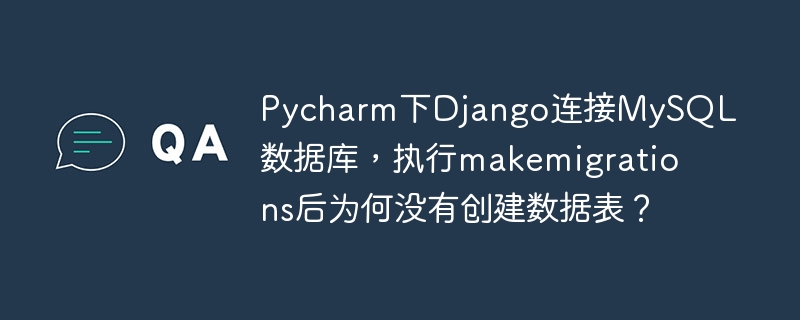??? 在mysql enterprise monitor監控過程中出現這樣的event事件,topic: possible mysql server uuid duplication for server 事件,從該提示的描述來看貌似是存在重復的uuid,而實際上主從關系并不存在重復的uuid。主從關系是通過xtrabackup來構建的。那到底是哪里的問題呢?下文是描述基于xtrabackup復制時導致監控出現重復uuid的問題。
1、故障現象
Topic:?Possible?MySQL?server?UUID?duplication?for?server?afd6bca4-6636-11e3-9d60-74867ae1c47c:?NOTICE Categories:Monitoring?and?Support?Services? Current?State:Open Auto-Closes?by?Default:Yes Advisor:Duplicate?MySQL?Server?UUID? Current?Status:Notice Last?Checked:May?4,?2015?2:18:02?PM
###提示uuid改變了N多次,在MySQL Instances監控見面會出現這2個主機配置在不停的切換中
MySQL?server?afd6bca4-6636-11e3-9d60-74867ae1c47c?changed?its?hostname?181?times?between?the?following?hostnames:DBSRV-TXT01DBSRV-SLAVE02 MySQL?server?afd6bca4-6636-11e3-9d60-74867ae1c47c?changed?its?connection?TCP?properties?96?times?between?the?following?TCP?properties: 127.0.0.1:3306127.0.0.1:3307 AdviceCheck?that?you?are?not?monitoring?more?than?one?instance?with?the?following?server?UUID:?afd6bca4-6636-11e3-9d60-74867ae1c47c.? This?can?be?caused?by?server?or?host?cloning.?If?this?is?expected?(example:?HA?scenarios),?then?please?ignore?this?notice.
2、校驗uuid
###經google文章描述,mysql.inventory保存了被mysql enterpirse moitor監控用到的uuid信息
###查看主庫上的uuid及mysql.inventory表
[root@DBSRV-TXT01?~]#?mysql?-uroot?-p?-e?" show?variables?like?'server_uuid'; select?*?from?mysql.inventory;"?-S?/tmp/mysql3307.sock? Enter?password:? +---------------+--------------------------------------+ |?Variable_name?|?Value????????????????????????????????| +---------------+--------------------------------------+ |?server_uuid???|?1ed85852-dd27-11e4-aa4a-44a8420ba7a5?| +---------------+--------------------------------------+ +--------+-------------------------------------------------------+ |?name???|?value?????????????????????????????????????????????????| +--------+-------------------------------------------------------+ |?uuid???|?afd6bca4-6636-11e3-9d60-74867ae1c47c??????????????????| |?hostid?|?ssh:{8a:c7:a9:42:3a:6b:06:ad:fa:ed:04:ac:a5:fa:f0:b5}?| +--------+-------------------------------------------------------+
###查看從庫上的uuid及mysql.inventory表
[root@DBSRV-SLAVE02?~]#?mysql?-uroot?-p?-e?"????---Author?:?Leshami >?show?variables?like?'server_uuid';????????????---Blog???:? http://www.php.cn/ >?select?*?from?mysql.inventory;" Enter?password:? +---------------+--------------------------------------+ |?Variable_name?|?Value????????????????????????????????| +---------------+--------------------------------------+ |?server_uuid???|?f7e00194-2f59-11e4-bcf6-b82a72d46b21?| +---------------+--------------------------------------+ +--------+-------------------------------------------------------+ |?name???|?value?????????????????????????????????????????????????| +--------+-------------------------------------------------------+ |?uuid???|?afd6bca4-6636-11e3-9d60-74867ae1c47c???????????????????| |?hostid?|?ssh:{8a:c7:a9:42:3a:6b:06:ad:fa:ed:04:ac:a5:fa:f0:b5}?| +--------+-------------------------------------------------------+
###從上面的查詢結果得知,mysql.inventory表里邊確實保存了相同的uuid
###這個相同的uuid是由于使用了實例級別的熱備,所以2個實例具有相同的uuid
###清空mysql.inventory,然后重啟監控agent(略),問題解決
[root@DBSRV-SLAVE02?~]#?mysql?-uroot?-p?-e?"truncate?table?mysql.inventory"?-S?/tmp/mysql3307.sock Enter?password:
3、關于MySQL MEM UUID duplication
MySQL?Enterprise?Monitor?uses?a?number?of?unique?values?known?as??????? UUIDs?to?identify?the?different?????? components,?including?the?MySQL?instance?being?monitored.?UUID?????? values?related?to?the?MySQL?instance?and?the?host?on?which?it?runs?????? are?stored?in?a?table?mysql.inventory?within?????? the?instance.?MySQL?Enterprise?Monitor?creates?this?table?if?it?does?not?exist?????? already.
-
Each MySQL Server has a UUID, stored in the ? ? ? ? ? mysql.inventory table, that uniquely ? ? ? ? ?identifies the MySQL server to the rest of MEM. The server ? ? ? ? ?UUID is used to collate information about a single MySQL ? ? ? ? ?instance.
-
Each host (the machine on which the agent is running) has a ? ? ? ? ?UUID to uniquely identify the host to the rest of MySQL Enterprise Monitor. ? ? ? ? ?This is used to collate the OS information (such as CPU, RAM ? ? ? ? ?and disk data). The host ID also determines whether the MySQL ? ? ? ? ?server is on the same host as it was before, to identify when ? ? ? ? ?data has been moved between machines, or when a machine has ? ? ? ? ?been upgraded. The host UUID is stored within the ? ? ? ? ? hostid row within the ? ? ? ? ? mysql.inventory table.
-
Each agent has a UUID to identify the agent to MEM. The agent ? ? ? ? ?UUID is defined within the agent-uuid ? ? ? ? ?parameter within the agent configuration file.
These UUIDs are used in combination to register and collate ? ? ?information, and to determine the location and source of an issue.
Note
Because each host must be unique, be careful when restoring from ? ? ? ?a backup so you do not have hosts with duplicated SSH keys or ? ? ? ?UUIDs.
The MySQL Enterprise Monitor Agent and MySQL Enterprise Service Manager use the unique host ID, ? ? ? ? ?stored within the mysql.inventory table on ? ? ? ? ?the monitored MySQL Server, to determine whether the instance ? ? ? ? ?being monitored is a clone. The host ID of the current server ? ? ? ? ?is checked against the stored value when the agent starts. If ? ? ? ? ?the generated host ID and stored host ID do not match, you get ? ? ? ? ?an error similar to the following in the agent log file:
%s:?[%s]?the?hostid?from?mysql.inventory?doesn't?match?our?agent's?host-id?(%s?!=?%s) We?assume?that?this?is?a?cloned?host?and?shutdown?now. Please?TRUNCATE?TABLE?mysql.inventory?on?this?mysql-instance?and?restart?the?agent. If?this?is?a?master?for?replication,?please?also?run?SET?SQL_LOG_BIN?=?0;?first.
To fix the problem, connect to the MySQL server using the ? ? ? ? ?credentials configured when you installed the agent, and then ? ? ? ? ?truncate the mysql.inventory table:
mysql>?TRUNCATE?mysql.inventory;
Now restart the agent, which recreates the ? ? ? ? ? mysql.inventory table with the updated ? ? ? ? ?instance UUID and hostid information.
以上就是Possible MySQL server UUID duplication for server?的內容,更多相關內容請關注PHP中文網(www.php.cn)!



















